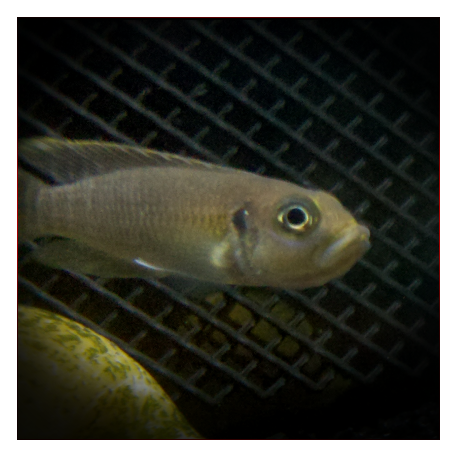More info
Datasheet
| Minimum Tank Size | 40 litres / 10.57 US gallons |
| Maximum Size | 6.5cm / 2.56inches |
| Temperature | 23°C / 73.40°F - 27°C / 80.60°F |
| Hardness | 8-25ºdH |
| pH | 7.5-9.0 |
General Description
Neolamprologus Brevis, commonly known as the "Frog-faced cichlid," is a territorial species found in Lake Tanganyika. They are relatively small, with color morphs like "sunspot," "katabe," and "sambia," and can reach up to 6.5cm in size. This species prefers areas with soft substrates and fewer snail shells, where they establish small territories fiercely defended against intruders.
Aquarium Setup
For Neolamprologus Brevis, a tank of at least 40 litres with sandy substrate and a depth of over 2 inches is recommended. The setup should include numerous empty snail shells for territory and breeding purposes. Water conditions should be hard (8-25 dH), alkaline (pH 7.5-9.0), and maintained at a temperature of 23-27°C.
Behaviour
These cichlids exhibit territorial behavior, fiercely defending their shells and the surrounding area. Neolamprologus Brevis can coexist with other species in the tank, especially if they inhabit different zones. When in groups, they may form colonies, requiring ample shells for female occupancy and a balanced male-female ratio to reduce aggression.
Feeding and Diet
Neolamprologus Brevis primarily feeds on live and frozen foods, though they may accept dried varieties, especially if tank-bred. Variety is key, with live and frozen foods constituting the main diet to ensure optimal health and vitality.
Reproduction & Dimorphism
Breeding Neolamprologus Brevis is relatively easy, with females depositing eggs in snail shells. Males fertilize the eggs, after which females guard and fan them until hatching. Adult males are noticeably larger than females, but sexing juveniles can be challenging.
Habitat and Distribution
Endemic to Lake Tanganyika, Neolamprologus Brevis is widespread in the lake, preferring deeper waters along the shoreline with soft substrates and limited snail shells. They are part of the Cichlidae family, specifically Pseudocrenilabrinae.

